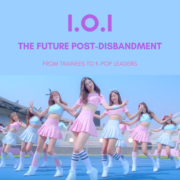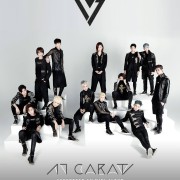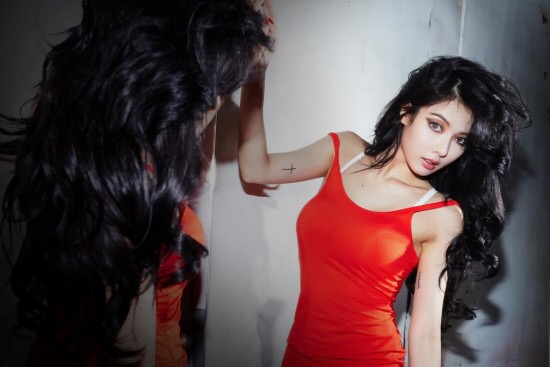The Vulgar Aesthetic of Son Dambi: Digital Perspectives in K-Pop
In 2012 after the longest hiatus of her career, Son Dambi released the Brave Brothers produced “Dripping Tears.” It’s a signature Brave Brothers sound with piano melodies mixing with prominent synths. It was received somewhat favourably, yet most found it to be lacking in certain areas. Namely the cheapness of the electronic sounds, while common to Brave Brothers, they felt out of place in 2012. By that year K-pop, had begun its musical ascent to almost exclusively pristine productions. SM Entertainment did not fault with one release from EXO’s “MAMA” to Taetiseo’s “Twinkle.” Even seven months before “Dripping Tears” was released, Brave Brothers made a huge impact with Sistar’s “Alone.” So why did Dambi and Brave Brothers not move forward with the rest of the K-pop world? With the hindsight of being able to view her career as a whole through this lens, we can understand the true artistry of Dambi’s cheap music.
This means taking a look at Dambi through ideas we might not have used before. Something that runs throughout all her music is a sense of the digital. Most of us participate in the K-pop world through entirely digital means. Like me, it may have started when you read an online article praising its merits or stumbled upon an intriguing music video and were hooked from that moment on. We listen and watch videos through Youtube, communicate on social media sites like Twitter, and read exclusively online criticism. Apart from the odd concert (which play havoc on our bank accounts), K-pop and the physical world very rarely come together for international fans. The music is released and consumed through digital means, but what does this do the sound of the music itself?
Also on KultScene: IU’s Red Shoes: A Torment or Saviour?
Discussing the idea of a digital music means taking a leap of faith as to what digital sounds like. Of course, we immediately think of electronic sounds like synthesizers, vocal effects, and processed drum beats. While these types of effects all started out as electronic amplifications, they have been assimilated into the digital side of music recording. This is the difficult thing about defining digital music, in all media it takes the pre-existing forms and makes them its own. What’s best then is to discover what it means with a single artist. That’s where we understand Dambi’s return to “Dripping Tears.”
Debuting in 2009 under Pledis Entertainment, Dambi entered the K-pop fray styled as the female Rain. Having trained dance in America, there was high hopes for her, not to mention being Pledis Entertainment’s first artist. At her height she lived up to these expectations, yet her legacy is small compared to her contemporaries. Having a musical career of six years that consists of only one number one means this isn’t exactly a surprise. Being a solo female artist was difficult at that time if you weren’t churning out ballads. It is Dambi’s commitment to her musical aesthetic that really separates her. She was born of a time when auto-tune was in fashion and all pop music sounded cheap in Korea. For Dambi, this was the sound. It was a sound that never left her, a sound that defined her. When we look back now, it is seen as tacky or vulgar. That does not do justice to a career completely reliant on these sounds. From shifting perspectives on femininity to abstract pieces embedded in advertising songs, Dambi used these digital sounds and looks to set herself apart.
Building a Digital Realm
The opening three years of Son Dambi’s career are her most straightforward musically. She was perfectly of her time, releasing music that didn’t push the boat or set the charts alight. What it did however, was set out what sort of artist she was going to be for the next six years. It all started on the 20th of June 2007 with “Cry Eye.”
Written by Brian Kim and produced by Jang Joon Ho, “Cry Eye” was Dambi and Pledis’ debut song. “Cry Eye” is inspired by Timbaland’s work with Justin Timberlake, particularly 2002’s “Cry Me A River.” The beatbox style beat and synths are very similar but are actually a sound K-pop has not done a lot of. Most of K-pop’s inspiration came from Europop or more straightforward American hip-pop. While the sound itself may not be indicative of Dambi’s work to come, the approach to it certainly is.
In bringing a song like this into the K-pop world back in 2007, the quality had to drop. The technology either didn’t exist there at the time due to lack of funds or producers were not skilled enough yet. So creating a more machine made sound, producers could cover up the obvious lack of money. For “Cry Eye” this meant making the synths more prominent and giving all of the acoustic sounds (the guitar and drums) a slightly rounded digital shape. It’s an inflection that will be heard throughout her career, especially on pianos. It’s a sound at once familiar but distant, we know what instrument it is but it doesn’t sound quite right. This is where opinion starts to turn. This is the sort of sound people lament when they say pop and dance music aren’t “real” music. Yet as we live more and more in a digital world, it is a sound that will begin to better reflect us. So instead of making it worse, the style has changed to accommodate the technology.
The video, like the music and lyrics, is generally formulaic aside from a few moments, which tell us a lot to do with the subject we are on. Small gestures towards the digital and away from reality show that Dambi was ready to enter the idol world wholly. At the beginning she opens a laptop which has the title of her video. She dances facing a speaker, not the boy she is singing about. For Dambi, she is the important one. She watches herself narcissistically or critically or both given both traits are incredibly important to an idol. Dancing with the speaker places emphasis on her music, it’s a sign on how to see her as an artist.
If “Cry Eye” is an uncertain beginning for Dambi as an unordinary artist, her follow up “Bad Boy” is a clear statement. The stark opening synths, the word ‘technology’ and the auto-tuned line of ‘you are my bad boy’ create a sonic landscape that moves closer to the digital realm. It is also a song perfectly reflective of her aesthetic. The synths have an uncomfortable fuzzy edge to them, the auto-tune (like most of the time) is plain bad. Unsurprisingly this is also Dambi’s first collaboration with Brave Brothers. This sort of sound was synonymous with Brave Brothers throughout these years. Not a stranger to defining sounds for groups, the production team would go on to work with Dambi four more times (including “Dripping Tears”) on pivotal tracks in her career.
These three tracks were also the most successful term of Dambi’s career. Along with “Bad Boy,” we look back at these tracks with a pinch of salt. They can be enjoyed on a nostalgic level, yet I fear they will be forgotten as K-pop continues to improve. While generally fun they do not hold up alongside more recent work. That is not their function though.The next Brave Brothers track “Crazy,” released in 2008, got her to number three on the charts and gave her an iconic chair dance. Following that, 2009’s “Saturday Night” brought to the top of the charts and she finally solidified herself as a top artist of the time. Both of these songs revive sounds from the ‘80s and ‘90s and are put through Dambi’s modern prism. They have the same rounded electronic sound as her previous work. Compared to throwbacks from today, like Wonder Girls’ “I Feel You,” they do not stack up as pure throwbacks or as a total modernization. They sit somewhere in between with tacky edges.
Advertising Gestures
Dambi’s third collaboration with Brave Brothers and first with After School as a group was “Amoled,” an advertising song for a new technology for phone displays. AMOLED stands for active matrix organic light emitting diode. It is essentially an upgrade of the LED but powered digitally, so the same basic technology just improved and changed slightly by digital means. Sound familiar?
In “Amoled,” Dambi and After School exist in a totally digital world. In the video they dance in AMOLED boxes in neo-Seoul fashion. All of the singing is rendered in auto-tune. Lyrically it brings the AMOLED metaphor for Dambi’s career into literal terms. It’s about realizing one’s beauty, “Your eyes might just be blinded by my intense clarity,” Dambi awkwardly croons through layers of auto-tune. Dambi is a singer of original qualities that only come to light within these confines, “I’m a girl who shines all on her own, just bling like silver & gold.” She’s comfortable in this digital realm, her voice isn’t being pushed and she can begin to shift the perspective on her music. The metaphors are obvious, the execution awkward, and the video with Dambi making cute faces and pushing a phone in our faces is even worse. Everything about the song is vulgar and cheap.
Previous to “Amoled” in 2008, Dambi released a song called “Change the World.” It was her first advertising song and was used as a promotion for online role-playing game Prisontale 2. It’s also the most orthodoxly beautiful moment in her career. A simple piano melody combines with a soprano backing vocal to create a classical feeling of true beauty. This sound is a rare gesture in Dambi’s discography but even stands out amongst all of K-pop. It allows her weak, slightly flat vocals to drift along not needing to shine. The lyrics help by being almost impressionistic. Short phrases with little explanation come one after the other creating a feeling rather than a clear story. “Unfamiliar cold, Into darkness,” “Love and tears, Even farewell, Do not be afraid.”
“Change the World” however, does not escape from Dambi’s digital home. Firstly, it’s an ad for a game that only exists online. Second, the techno drumbeat which replicates the cold digital repetition found in video games. It is a bridge between a regular pop artist and the artist that Dambi was to become. Favouring abstraction over clarity, Dambi continually takes what previously existed in an electronic or acoustic manner and runs the modern hand of digital over it. Applying an edge that did not and still does not exist in the pop world.
”Ladies, this is your story”
Up to 2010, Dambi has merely been setting up all of the ideas being talked about. Without the hindsight of “Dripping Tears,” it would be impossible to make these sort of interpretations. While “Dripping Tears” may be the catalyst in discovering Dambi’s vulgar aesthetic, “Queen” is her masterpiece where it all comes together.
Like most of her songs, “Queen” at first sounds cheap and awkward. The large amount of auto-tune, the rap break, and the cheap visuals make for something that doesn’t shout re-listen/re-watch. Yet I find it to be the most rewarding of all her songs. It slowly reveals its qualities to you as each new element is introduced. “Queen” is a new direction for Dambi vocally, but her dedication to thrash art continues.
“Queen” does a sort of bait and switch in its intro. The opening piano melody is sweet and straightforward. A second piano is then added that sounds altogether more powerful and yet with reverb effects to give it a more physical feeling. The first piano now sounds odd, a bit less real while the second reverberates unnaturally. The song has taken two normal seemingly acoustic sounds and put them together to create something totally different. By the time we hear Dambi’s autotune introduction, we know for sure we have re-entered her digital sonicscape.
In previous work Dambi’s airy vocals didn’t impress much, but here she has a confident talk/rap. Its cheeky a little bit sexy and a lot weird. From her it’s a surprising pitch up where she usually relied on huskier tones. The piano melodies pitch up as well from the intro in order to give her a boost. It goes on to show Dambi’s standard vocals at their best before hitting that chorus climax. It is Dambi’s most perfect chorus. The repetition of one phrase “Wake up” and the 8-bit synth swirls underneath her voice and piano all to create something so suited to her and the theme of this song. The video goes on a psychedelic trip, we see triple as Dambi repeats her phrase over and over.
Also on KultScene: Why ‘Signal’ Beat ‘Descendants of the Sun’ For Best Drama
Right after it moves into the weirdest rap break in K-pop history. The man’s identity is still a mystery to me, my best guess would be producer Mordney. We barely see his face as he raps through the most effective autotune I have ever heard. His voice goes past even sounding like a robot but onto something more like a time travelling popstar from the future (the future as imagined by people in the 1980’s). His lyrics mostly don’t make sense but his final line proves what it is him and Dambi are doing, “This is the magic show, We’ll offer and make the show.” This is magic not just music. “Queen” never recovers from this rap. It is beautiful because of it.
The chorus only feels like it’s over once that rap finishes, but in its place is a similar verse from the beginning but turned up a notch. Gone is the piano melody, replaced by floating synths. The video also only starts to explicitly reference Alice in Wonderland after, as we see Dambi crawl around big houses in a childish dress with her hair down. In this adaptation, the rap is the rabbit hole (rappit hole if you will). We are seeing into Dambi’s world now. It’s colourful, trippy, and confusing. The difference between Alice in Wonderland and “Queen” is that once the fall starts in “Queen,” it never stops. The song only has two choruses but the second brings the song into its pure abstract form. It repeats the same phrase except this time with added autotune ad-libs and twirling synths. It repeats and repeats giving us time to understand it then starts again with even more new elements. This time with delays in “Wake up,” the song really feels like it’s falling apart; it is kaleidoscopic in sound and image.
“Queen” serves to tell a story of female confidence, but its lyrics don’t have much of a narrative by themselves. It is thanks to the music that our perspectives shift on the meaning. The traits Dambi sings about “much higher kill heel, my over denim looks” are not only female specific but are the type of thing women might be shamed for feeling confident in. The music works to take us out of our usual thought patterns. This is a zone created for women who want to express themselves in specific and maybe weird ways. The trace of man is destroyed by the having the male voice in the song taken out of any human context. Through the abstract deconstruction of her song, Dambi has placed herself in a totally original space. Her vulgar sounds and cheap videos are the primary works of art and are detailed attacks on the patriarchal idea of what is good art.
After “Queen,” Dambi took a break in to prepare for “Dripping Tears.” Her return as we have seen was met softly. It showed she wasn’t the idol she thought she was, especially compared to fellow veteran solo artist Lee Hyori’s decisive return a year later. It was to be her penultimate release and maybe it was always known. The lyrics are about a sincere farewell. “Can’t sleep every night, Can’t think anything, My heart is drenched with the farewell, Please dry my eyes,” she laments towards the end; a heartfelt goodbye to a misunderstood career. When people don’t notice your cheap wig falling off and clone alien backing dancers are a critique of the frail tether linking the reality and image of an idol, then maybe it’s okay to move on.
Not without leaving us a final flicker of beauty though.
Dambi’s final release, “Red Candle,” (a digital only single) came out in December of 2013. Written and produced by upcoming idol producer SHINee’s Jonghyun on only his second song for an artist other than SHINee (the other being another iconic solo female IU), “Red Candle” is a sensual Latin inspired slow jam. It strips away all the elements we have come to know Dambi. Acoustic guitars take the spotlight with sweet piano accompaniment and a variety of percussion in the background. Her voice is a husky whisper, she sounds almost resigned to the end.
“Red Candle” shows us a woman coming to terms with her loss of fame. It is something so delicate yet powerful, she warns at different times “Cover up because you’ll disappear at the slightest wind” and “You’re too hot to hold, like it’s gonna melt.” It’s hard to believe something so hot can be extinguished so quickly, but it’s all Dambi can see as she looks into her dressing room mirror. As she said herself in an interview, it recalls “something which is easily extinguished and melted, the melancholy and futility of actresses were born.” The flashing lights of photographers and adoring screams from fans at the beginning of the video are totally forgotten quickly after. Dambi lies on a bed frozen as she recalls these times when she was once loved.
A man and woman dance underneath a spotlight. The woman’s face is never shown clearly but it’s obvious that it is not Dambi. Whether or not it is supposed to be her, it represents the final break in her own link between the reality and our image of reality. Dambi has resigned herself to the dressing room of an actress, in being someone else not the Dambi we have come to know. In the most subdued moment of her career, Dambi says goodbye. Those girl next door eyes of hers shine bright again as the cameras flicker again, fans shout, she beams widely. We barely glimpse her as she walks through an avalanche of people until a freeze frame finish. This moment stops as Dambi is how she wants to be remembered. An icon of extraordinary originality.
With “Red Candle,” Dambi severed her ties with the digital world. It is a logical ending place despite her never officially confirming her musical retirement. Yet with the hindsight of this probably being her last song, we have gleaned much about her singular vulgar aesthetic. Dambi worked to re-imagine what the idea of good music can be. By moving onto her level the choices can be seen. From impressionist lyrics to abstract music through to psychedelic images, she created a palette of ideas few K-pop artists could claim to even come near. Now we know that perfection is not the only pop goal to strive for, pristine productions are not the only thing to listen to. By entering a digital realm, Dambi could take an outside look at the real world. She discovered new perspectives on femininity, pop music, and being an idol. Most of all, she discovered herself.
What do you think of Son Dambi and her music? Do you think any other K-pop artists do something similar? Share your thoughts in the comment section below and be sure to subscribe to the site and follow us on Facebook, Twitter,Instagram, and Tumblr to keep up with all of our posts.








